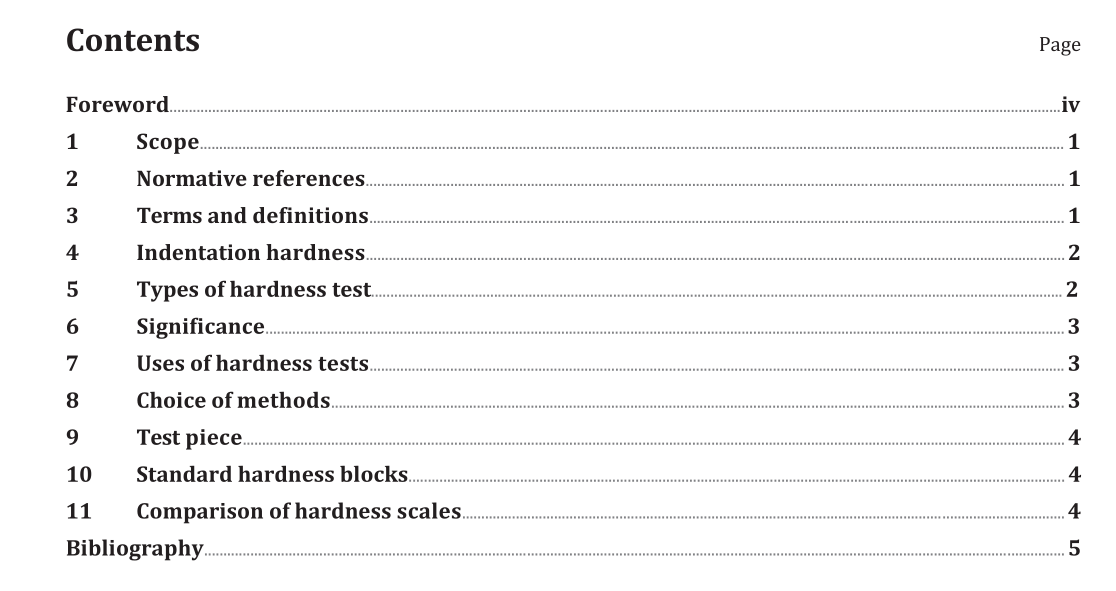BS ISO 18517:2015 pdf download,Rubber, vulcanized or thermoplastic — Hardness testing — Introduction and guide
1 Scope
This International Standard provides guidance on the determination of the hardness of vulcanized and thermoplastic rubbers.
It is intended to provide an understanding of the significance of hardness as a material property and to assist in the selection of an appropriate test method.
2 Normative references
The following documents, in whole or in part, are normatively referenced in this document and are indispensable for its application. For dated references, only the edition cited applies. For undated references, the latest edition of the referenced document (including any amendments) applies.
ISO 48, Rubber, vulcanized or thermoplastic — Determination of hardness (hardness between 10 IRHD and 100 IRHD)
ISO 7267-1, Rubber-covered rollers — Determination of apparent hardness — Part 1: IRHD method
ISO 7267-2, Rubber-covered rollers — Determination of apparent hardness — Part 2: Shore-type durometer method
ISO 7267-3, Rubber-covered rollers — Determination of apparent hardness — Part 3: Pusey and Jones method
ISO 7619-1, Rubber, vulcanized or thermoplastic — Determination of indentation hardness — Part 1:Durometer method (Shore hardness)
ISO 7619-2, Rubber, vulcanized or thermoplastic — Determination of indentation hardness — Part 2: IRHD pocket meter method
ISO 18898, Rubber — Calibration and verification of hardness testers
ISO 27588, Rubber, vulcanized or thermoplastic—Determination of dead-load hardness using the very low rubber hardness (VLRH) scale
3 Terms and definitions
For the purposes of this document, the following terms and definitions apply.
3.1 international rubber hardness degrees
IRHD
hardness scale chosen so that “0” represents the hardness of material having a Young’s modulus of zero and “100” represents the hardness of a material of infinite Young’s modulus
Note 1 to entry: The following conditions are fulfilled over most of the normal range of hardness:
a) one international rubber hardness degree always represents approximately the same proportionate difference in the Young’s modulus;
b) for highly elastic rubbers, the IRHD and Shore A durometer scales are comparable.
ISO 48 also specifies modified procedures for use on curved test pieces, with the result being expressed as apparent hardness. A dead-load method for very soft materials using the very low rubber hardness scale (VLRH) is specified in ISO 27588. This covers a range from about 30 IRHD to below 10 IRHD and the relation between VLRH and depth of indentation is linear. For rubber rollers, the Pusey and Jones dead-load instrument is specified in ISO 7267-3 in addition to the ISO 48 and durometer methods in ISO 7267-1 and ISO 7267-2, respectively. Durometers were originally intended to be hand-held but are now often mounted on a stand with a weight to apply the correct foot pressure. The best known are the Shore gauges, of which there are several different types to cover a range of materials, and which have been produced by a number of manufacturers. Shore A scale durometers for rubbers in the normal hardness range and D scale durometers for hard materials are standardized in ISO 7619-1 together with a micro instrument designated AM and an instrument for soft materials designated AO. The type A uses a truncated cone indentor, types D and AM use a radiused cone, while type AO uses a ball indentor. ISO 7619-2 specifies a pocket meter with a ball indentor designed to read in the IRHD scale.
BS ISO 18517:2015 pdf download
